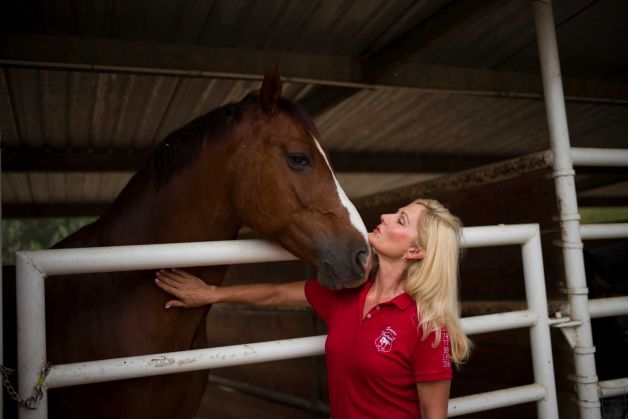By Sue Manning, Associated Press (July 23, 2014)
CHINO HILLS, Calif. (AP) — Almost every horse rescue in the country is running out of room or money as they continue to be strained by an influx of abandoned equines, a trend that began during the recession.
Although hundreds of nonprofits nationwide care for thousands of horses, resources are stretched thin. When the downturn started seven years ago, some owners got rid of their horses, many donors discontinued contributions to horse charities and adoptions plummeted.
“Some nonprofits are down 50 percent,” said Shirley Puga, executive director and founder of the California-based National Equine Resource Network. “If you have a fixed population of animals and your donations go down 50 percent, that’s a huge constraint financially.”
The economy has turned a corner, but things have only improved marginally for the rescues, Puga said. An astonishing number of horses are still being abandoned and many people are still worried about their finances and not ready to resume donating or adopting yet, she said.
At the Red Bucket Equine Rescue about 50 miles east of Los Angeles, Susan Peirce has taken in old, sick, starving, feral and abandoned horses, as well as those considered too slow or lame to race. She’s intercepted horses headed for legal slaughter in Mexico and Canada and to auction in the U.S.
As a result, space and cash are in short supply. Plus, the recession led to higher prices on everything horses need, including boarding, vets, farriers, feed, vitamins, electricity and bedding, Peirce said.
Susankelly Thompson director of Mylestone Equine Rescue in Phillipsburg, New Jersey, says the story is the same there: they are full and fundraising is a constant fight.
When the barns are at capacity and rescue owners can’t take in more animals, they will network to try to find an empty stall at another rescue, a foster home or with a potential adopter.
The Mylestone rescue has helped or placed as many as 500 horses over the last two decades, and although the facility is full with 37 horses, “we would always make room for a starving horse,” she said.
She said the rescue got a boost recently after winning a $10,000 grant from the American Society for the Prevention of Cruelty to Animals.
Money from animal welfare groups has helped chip away at the effects of the recession that started in 2007, the same year the last American slaughterhouse closed its doors. Slaughterhouse advocates claim bringing them back would eliminate the burden on rescues.
The federal government last year approved allowing plants in New Mexico, Missouri and Iowa to resume slaughtering horses, but their plans were blocked when Congress voted against funding the required inspections.
When seeking a companion animal, potential owners need to consider their lifestyle. They can choose a 20-pound dog or a 1,000-pound horse and decide to spend $100 or $1,000 a month. No matter the choice, Peirce hopes people will turn to rescues to get their animals.
Peirce’s shelter, Red Bucket, named for what her rescued horses eat out of, started in January 2009 with nine horses. Since then, it’s taken in 253 horses and found homes for 133, she said.
“When a horse comes to us, they get a bucket, a name and dignity,” Peirce said. “And we make a promise to them that it’s for life.”
For the original article please click here:


